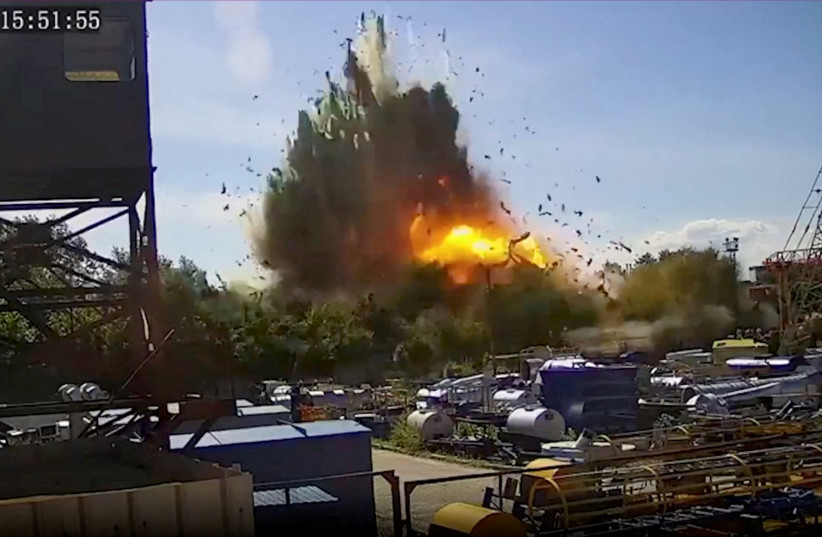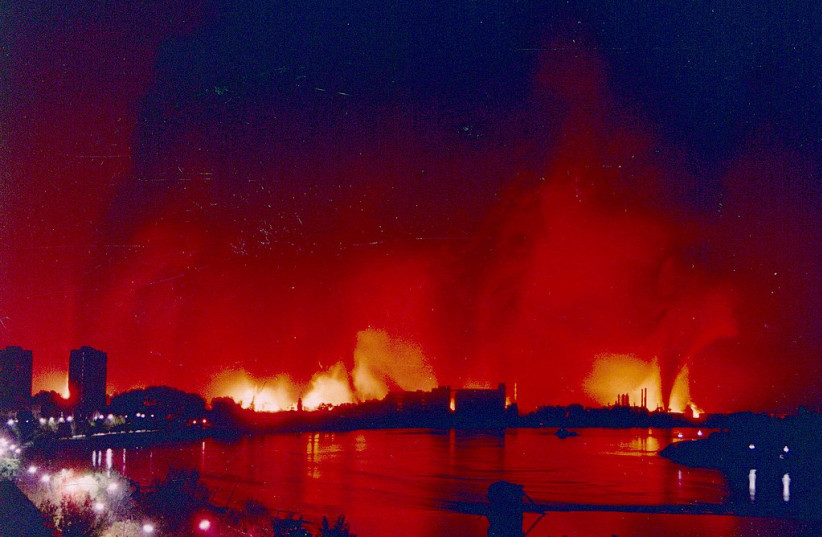There has been some confusion online regarding the airstrike policies of Russia and NATO, with some arguing that the two powers essentially follow the same playbook.
However, that isn't necessarily the case.
Both NATO and Russia have been involved in numerous conflicts around the world and have made use of airstrikes as a result, but the rules and procedures employed by both have their differences. And considering Russia's frequent strikes on Ukraine, these questions have become relevant once again.
Here's a look at policy details and Rules of Engagement that Russia and NATO use for their airstrikes around the world.
What is NATO's airstrike policy?

NATO forces follow an entire protocol for conducting airstrikes. As outlined in documents from the Joint Operations Command (JOC), the entire airstrike process revolves around not targeting civilian infrastructure or non-essential targets.
During the process, there is also a phase heavily involving lawyers. These legal experts work to analyze the proposed airstrike targets and legally validate them in accordance with international law and JOC guidelines.
Of course, there is more to the story than just this. For instance, there are special (albeit classified) policies for striking targets that could possibly cause environmental harm. In addition, mistakes do still occur as communication on the ground isn't always perfect. However, by and large, it is widely noted by most experts that NATO airstrike targeting guidelines exist to limit civilian casualties and only strike targets of military necessity.
Do NATO airstrikes ever kill civilians?
Civilian casualties were part of the reason why NATO rolled out a reformed policy regarding airstrikes.
In the past, civilian casualties happened on several infamous occasions in NATO operations, such as in Yugoslavia or Afghanistan.
For example, regarding Yugoslavia, where NATO forces intervened in the conflict, airstrikes were supposed to be carried out in ways that would limit civilian casualties. However, there were still many civilian deaths due to NATO strikes, in part due to the use of cluster munitions and strikes on densely populated cities, like Belgrade. According to a Human Rights Watch report, there were at least 500 civilian deaths during the NATO bombing campaign. And as HRW noted, these were not technically war crimes, because they were not targeted killings of civilians, but rather were violations of international law.
However, the rolling out of these new procedures changed that.
According to the United Nations Assistance Mission in Afghanistan (UNAMA), NATO airstrikes were responsible for over a quarter of all civilian deaths in Afghanistan in 2008. By 2013, however, it was just behind 4%.
That doesn't mean civilian casualties don't still happen in NATO airstrikes. In fact, airstrikes in Libya in 2011, during the NATO intervention in the uprising against Muammar Qaddafi, resulted in the deaths of civilians, as highlighted in investigations by the nonprofit Airwars. But the fact also remains that these deaths were inadvertent and the result of NATO following its policy to only target sites of military necessity.

What is Russia's airstrike policy? How does Russia choose its airstrike targets?
In contrast to NATO's airstrike policy, which is flawed but works to limit civilian casualties as much as possible, Russian airstrikes have resulted in numerous civilian casualties.
Officially, Russia's policy is supposed to follow the letter of international humanitarian law. This is spelled out explicitly in their manuals and training guide for the Russian military.
However, over the years, many have taken issue with how Russian forces actually carry out their objectives
For example, take Russia's military intervention in the Syrian Civil War. According to a 2019 report by the UK-based NGO Action on Armed Violence (AOAV), between 2015 and 2019, Russian airstrikes in Syria resulted in as many as over 15,400 civilian deaths. These also involved the use of wide-area impact explosives and were used above dense population centers.
Further, Russia's actual Rules of Engagement for airstrikes, as well as the exact details of its targeting process, have never been publically released, and reports of Russian forces deliberately attacking civilians and civilian population centers have existed for years, including war crime accusations.
This lines up with many accusations regarding Russia's conduct in its invasion of Ukraine.
On numerous occasions, Russia has been accused, with credible evidence circulated by international and open-source intelligence, of deliberately targeting civilians, population centers and infrastructure. This extends beyond just airstrikes, and also includes artillery bombardment, missiles and in some cases the massacre of civilians by ground forces.
Throughout all this, Russia repeatedly denied targeting civilians and claims to have only struck military targets. Abd this may be true in many cases – evidence has shown that Russia has increasingly been relying on older, out-of-date Soviet-era munitions and weaponry, which are far less precise. As such, some of these attacks on civilians may indeed be accidental. This is especially notable in the case of the attack on a shopping center in Kremenchuk.
But not everyone agrees with this claim. And because Russia has never publicized its Rules of Engagement, it is likely the true details will remain unknown.
